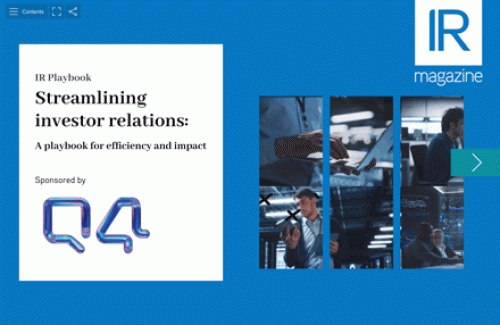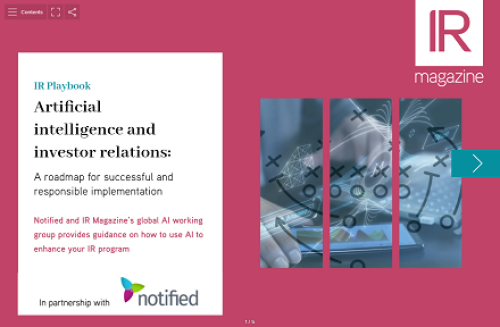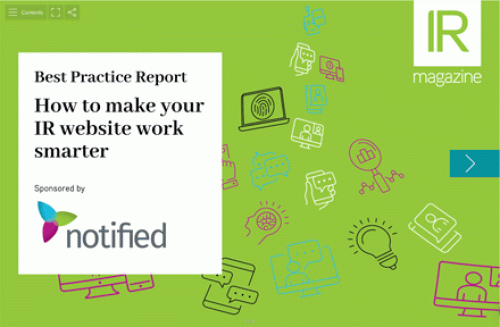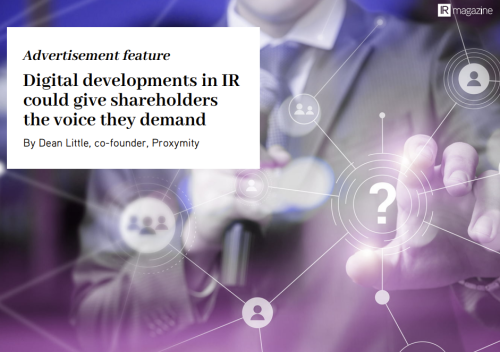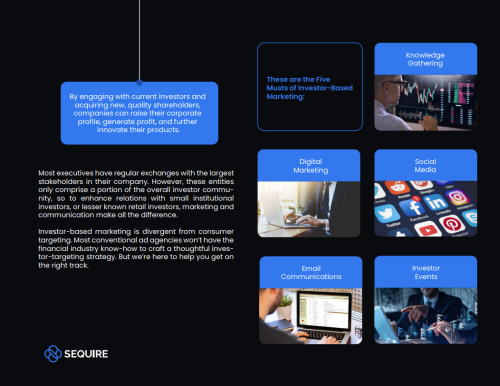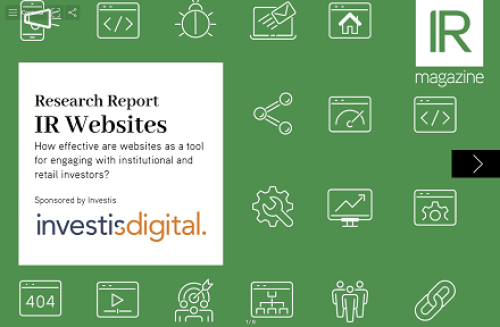![]() Just under two thirds (64 percent) of IR professionals indicated they have not embedded AI into their processes, but are interested in understanding its potential, according to findings from Nasdaq's 5th annual IR Issuer Pulse survey. AI integration could help support more efficient and strategic decision-making for IR professionals and marks a shift towards data-driven insights, automation, and enhanced communication strategies.
Just under two thirds (64 percent) of IR professionals indicated they have not embedded AI into their processes, but are interested in understanding its potential, according to findings from Nasdaq's 5th annual IR Issuer Pulse survey. AI integration could help support more efficient and strategic decision-making for IR professionals and marks a shift towards data-driven insights, automation, and enhanced communication strategies.
While only a fraction of IR professionals have fully embedded AI into their processes, there is a palpable curiosity to further explore its potential benefits. From forecasting market trends to anticipating investor sentiment and tailoring communication strategies, AI could be a significant step for organizations and their IR teams to stay ahead of the curve, mitigate risks and capitalize on emerging opportunities.
Today, investors are equipped to ask better questions and access more informative data on the companies they are tracking with the help of AI technology. On the IR side, embracing AI may not only help modernize traditional processes, but also foster a more dynamic and data-driven relationship. This transformative approach enables organizations to establish a more agile and insight-backed connection with their investors, as keeping pace with their demands and relevant market shifts and changes is crucial in today's fast-paced financial landscape.
IR professionals often grapple with data overload and time constraints. The influx of data, ranging from market trends to investor sentiments, can be overwhelming, making it challenging for IR professionals to sift through and extract meaningful insights efficiently. AI tools could help uncover insights that traditional analysis might overlook due to time limitations.
'Generative AI tools could help enable sector portfolio managers and analysts to identify both opportunities and risks to the target companies by scanning data, documents and news across all companies and sectors and automatically summarize the insights that are relevant to the securities you are investing in,' explains Michael Liscombe, VP Data Scientist at Nasdaq.
Harnessing similar AI tools as the buy-side to enhance comprehension of investor influencing factors could help IR professionals understand market dynamics, investor sentiment shifts and key drivers shaping investment decisions. Leveraging AI capabilities, IR professionals could also streamline their workflow, improve efficiency and gain valuable insights to enhance their practices effectively.
Mitigating risks with AI oversight
There are often risks and concerns when it comes to adopting new technology into day-to-day operations. While some IR professionals aren’t leveraging AI because of their limited understanding of its capabilities and resource constraints, 15 percent indicated hesitancy due to data privacy and security concerns. Resource limitations, primarily time and budget constraints, were also highlighted as deterrents.
Some other specific AI risks and concerns include AI hallucinations (information created by AI tools that can be mistaken as facts), data security vulnerabilities, unknowingly training AI models with data that may lead to biased information and the need for enterprise-level controls to mitigate adverse outcomes.
While acknowledging these risks is a helpful exercise, it is important to recognize that AI still requires human oversight—and the onus is on organizations to make sure IR teams are using the technology responsibly. For example, to help with risk mitigation, organizations may consider establishing an AI governance committee that acts as a system of support for successful AI-related endeavors.
During Nasdaq’s 2024 IR Forum, Dominic Polisano, Global Head of Financial Risk Management & Risk Technology at Nasdaq, explained that Nasdaq has a committee like this in place. 'What's crucial for an AI governance committee is having leadership support and oversight of all those initiatives across the organization and making sure that you have the right representation from across the business, as well as in terms of the skillset and expertise on the committee,' he explained. There is also a need for individuals with cybersecurity and data privacy experience, as well as legal risks that need to be considered, according to Polisano.
Even with an internal oversight committee in place, organizations and their IR teams will likely grapple with new risks as AI continues to evolve. But amid these evolving challenges is the opportunity to integrate low-risk AI capabilities into day-to-day processes and workflows, so IR teams can start realizing efficiencies.
Five AI use cases in IR
AI integration presents promising use cases to streamline processes and create efficiencies for IR teams. Some potential lower risk use cases include:
- Summarizing peer and market events. According to Nasdaq’s survey, 32 percent of IR professionals indicated summarizing peer and market events as one of the most significant opportunities for generative AI in IR workflows. Manual summarization can be a labor-intensive task. AI could be a valuable tool to generate initial drafts of event and meeting summaries for IR teams to review. This could streamline the process for IR professionals before presenting the essential information to stakeholders, ultimately saving them time and resources.
- Summarizing CRM information. AI can be a powerful tool for IR professionals looking to streamline the summarization of CRM information, including investor data and meeting notes containing topics and themes derived from interactions with investors. The rapid generation of customized summaries through AI capabilities could be a valuable use case, enabling IR teams to extract insights and trends from CRM data efficiently.
- Preparing for earnings. AI could be used to refine the terminology, tone and language used in earnings communications to ensure precision and consistency in messaging and align with the organization's brand voice.
- Drafting regulatory disclosures. AI could summarize complex information from regulatory filings, market reports, and internal sources, helping IR teams generate comprehensive and concise disclosures. For example, there is a higher need for ESG and sustainability disclosures and transparency in response to increasing regulatory requirements. AI could potentially automate data collection and analysis related to sustainability metrics and other relevant ESG data.
- Responding to investor queries. AI could be instrumental in providing timely and accurate responses to a wide range of investor questions, which may result in improved communications and engagement with investors. IR teams could use AI to anticipate and address common investor inquiries, supporting consistent messaging and quick turnaround times.
How Nasdaq is integrating AI in IR
Advances in AI have led to expanded possibilities at Nasdaq. For years, Nasdaq developers have been embedding AI in our IR Intelligence suite, including Nasdaq IR Insight, with the goal to transform traditional IR processes.
One of the key advancements on the horizon is enhanced transcript summarization capabilities. By leveraging AI technology, Nasdaq IR Insight can help IR teams generate quick summaries of crucial information from competitors' earnings calls, conference presentations or even investor days. With all underlying data integrated into the platform, the process of accessing and summarizing this information becomes more seamless and efficient.
AI integration equips IR teams with advanced data analytics capabilities, helping them turn investor behaviour, preference, and market trends data into actionable insights. An enriched dataset — developed with the help of AI — not only empowers IR professionals to better tailor their communications, but also helps them make informed decisions based on comprehensive and up-to-date information. While there are always some associated risks, embracing AI in IR can improve operational efficiencies, streamline investor data management, and targeted IR strategies.
To learn more about Nasdaq IR Insight, visit Nasdaq IR Insight or get in touch here.

